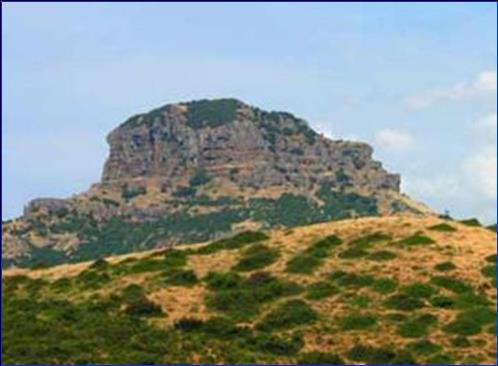
|
L'aspetto singolare dell'Arcuentu ha sempre stimolato la fantasia dei sardi: i naviganti lo soprannominarono “il pollice di Oristano” perché visto dal mare ricordava il pollice umano, altri invece “Napoleone”, paragonando la sua particolare forma (che ricorda la sagoma di un volto umano) al profilo di Napoleone Bonaparte. |
|
Il Monte Arcuentu, un rilievo vulcanico alto 784 metri, costituisce un importante attrattiva naturalistica. Sulla cima, che può essere raggiunta a piedi attraverso sentieri, è possibile ammirare un meraviglioso boschetto di lecci secolari, sugheri, vaste estensioni di macchia mediterranea (dove vi trovano rifugio numerose specie animali tra cui il cervo sardo) ed un panorama unico con vista sul mare e sul Campidano.
In passato, data la posizione strategica, sulla cima del monte fu edificato il castello “Erculentu” (appartenuto ai giudici di Arborea), del quale oggi sono visibili solo i resti di una delle tre cisterne. |

|
Mount Arcuentu has the unmistakable profile of a sleeping human face. One of the various names that people in the past gave to this mount was “Napoleon”, because the ridge really looks like of Napoleon’s face. |
|
Mount Arcuentu is a huge basalt fortress (784 meters high) formed millions of years ago as a result of a volcanic eruption that affected the whole area. It is an important naturalistic attraction. The summit is reached by means of a steep path bordered by walls of basalt. It includes traces of woods of ancient ilexes, cork oaks and above all very wide areas of Mediterranean scrub (safe shelter for the numerous species of animals which live there, like the Sardinian deer). On the highest peak of Arcuentu, from the Middle Ages exploited as a look-out point for the defence of the territory, your eye can extend for miles all over Campidano. On its summit are the remains of a 10th-century castle “Erculentu”. |





